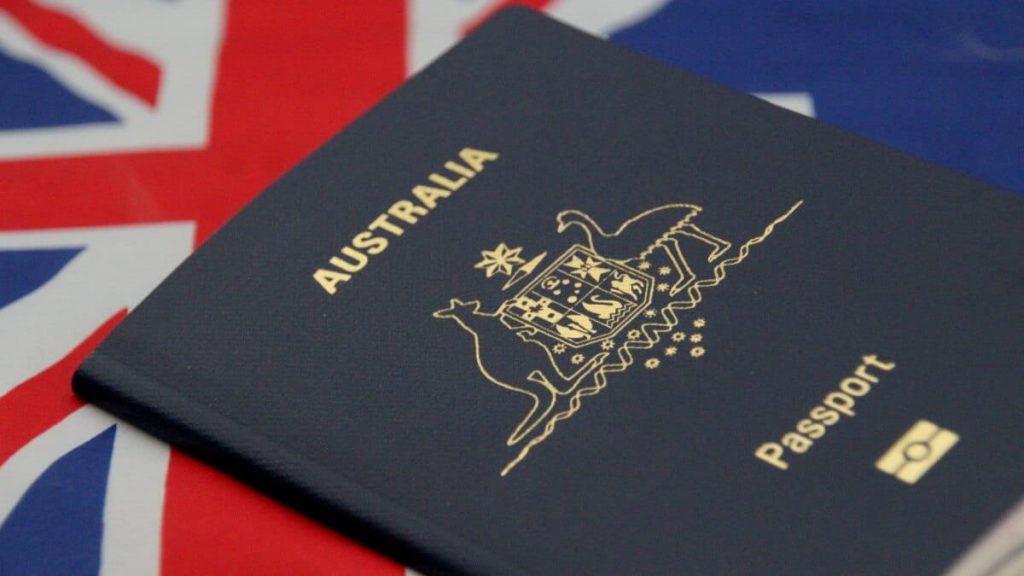Australia is a popular destination for individuals looking to work and build their careers in a new environment. To work legally in Australia, most foreign nationals will need to obtain a work visa. This article provides a step-by-step guide on how to apply for a work visa in Australia.

What Are the Benefits of Australia’s Work Visa?
Australia’s work visa offers several benefits to individuals looking to work and build their careers in the country. Here are some key benefits of Australia’s work visa:
- Employment Opportunities: Australia has a robust and diverse economy, offering a wide range of employment opportunities across various sectors. With a work visa, you can access the Australian job market and explore employment options that align with your skills, qualifications, and career goals.
- Temporary or Permanent Residency: Depending on the work visa category, you may have the opportunity to obtain temporary or permanent residency in Australia. Temporary work visas, such as the Temporary Skill Shortage Visa (Subclass 482), allow you to work for a specific employer for a defined period. Permanent work visas, such as the Skilled Independent Visa (Subclass 189) or Employer Nomination Scheme Visa (Subclass 186), offer a pathway to permanent residency and potential citizenship.
- Skill Development and Career Growth: Working in Australia provides opportunities for skill development and career growth. The country has rigorous workplace standards and a commitment to professional development. By working in Australia, you can enhance your skills, gain valuable work experience, and expand your professional network.
- High Standard of Living: Australia is known for its high standard of living, offering quality healthcare, education, and infrastructure. With a work visa, you can access these amenities and enjoy a comfortable lifestyle for yourself and your family.
- Multicultural Environment: Australia is a multicultural country that welcomes people from diverse backgrounds. Working in Australia allows you to experience and embrace cultural diversity, interact with people from different nationalities, and broaden your global perspective.
- Access to Social Security Benefits: Depending on the type of work visa and your circumstances, you may be eligible for certain social security benefits. These benefits can include healthcare subsidies, access to public education, and retirement savings programs.
- Travel Opportunities: Australia is renowned for its natural beauty, including stunning landscapes, beaches, and unique wildlife. With a work visa, you have the opportunity to explore and travel within Australia during your time off, experiencing the country’s rich culture and natural wonders.
- Family Sponsorship: Some work visa categories allow for family sponsorship, enabling you to bring your spouse, partner, or dependent children to Australia. This allows for family reunification and the opportunity for your loved ones to benefit from Australia’s lifestyle and educational opportunities.
How to Apply for a Work Visa in Australia
Step 1: Determine the Appropriate Work Visa Category
Australia offers various work visa categories, each with its own eligibility criteria and requirements. It’s essential to identify the most suitable visa category based on factors such as your occupation, skills, qualifications, and the purpose of your stay. Common work visa categories include the Temporary Skill Shortage Visa (Subclass 482), Skilled Independent Visa (Subclass 189), and Employer Nomination Scheme Visa (Subclass 186).
Step 2: Check Eligibility Requirements
Once you have identified the appropriate work visa category, carefully review the eligibility requirements. These requirements typically include having a valid job offer from an Australian employer, meeting relevant skills and qualifications, demonstrating English language proficiency, and fulfilling health and character requirements. Ensure that you meet all the prescribed criteria before proceeding with the application.
Step 3: Obtain a Skills Assessment (If Required)
For certain work visa categories, such as the Skilled Independent Visa (Subclass 189), you may need to undergo a skills assessment by a designated assessing authority. The skills assessment evaluates your qualifications and work experience to determine if they align with the requirements of your nominated occupation. It is crucial to select the correct assessing authority and follow their guidelines for the assessment process.
Step 4: Lodge an Expression of Interest (EOI)
In some cases, you may need to submit an Expression of Interest (EOI) through an online system, such as SkillSelect. The EOI provides information about your skills, qualifications, and desire to work in Australia. It allows the Australian government and potential employers to assess your eligibility and suitability for a work visa.
Step 5: Submit the Visa Application
Once you have received an invitation to apply for a work visa based on your EOI, you can proceed with submitting your visa application. Depending on the visa category, you may need to complete the application online or on paper. Provide accurate and complete information, ensuring that all supporting documents, such as passport copies, identification, skills assessment results, and English language test results, are included.
Step 6: Pay the Application Fee
Work visa applications in Australia typically require payment of an application fee. The fee amount varies depending on the visa category and any additional services you may require, such as priority processing or health examinations. Check the current fee schedule and make the payment as instructed by the Department of Home Affairs.
Step 7: Attend Medical Examinations and Provide Character Documents
Most work visa applicants must undergo medical examinations conducted by approved panel physicians to ensure they meet the health requirements. Additionally, you will need to provide character documents, such as police clearances or certificates, to demonstrate good character. Follow the instructions provided by the Department of Home Affairs regarding these requirements.
Step 8: Await a Decision
Once you have submitted your work visa application, you will need to wait for a decision from the Department of Home Affairs. The processing times can vary depending on the visa category, your individual circumstances, and the demand for visas. You can check the progress of your application online using the Department’s tracking system.
Step 9: Visa Grant and Travel to Australia
If your work visa application is successful, you will receive a visa grant notification. Review the grant letter carefully to understand the visa conditions, validity period, and any travel restrictions. Make necessary arrangements for your travel to Australia, including booking flights, organizing accommodation, and ensuring you have sufficient funds to support yourself upon arrival.
Conclusion
Applying for a work visa in Australia involves several important steps, from determining the appropriate visa category to submitting a complete and accurate application. It is crucial to understand the eligibility requirements, follow the guidelines provided by the Department of Home Affairs, and provide all necessary supporting documents. Seeking professional advice or consulting the official resources of the Department can help ensure a smooth and successful visa application process.




Recent Comments